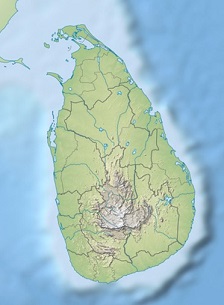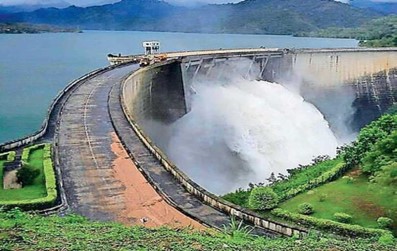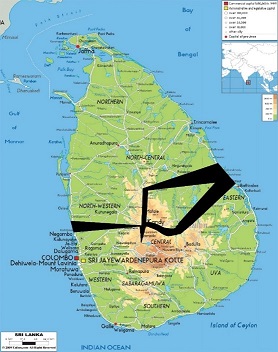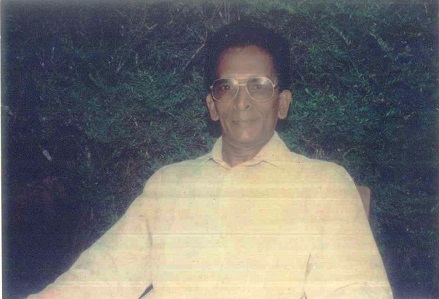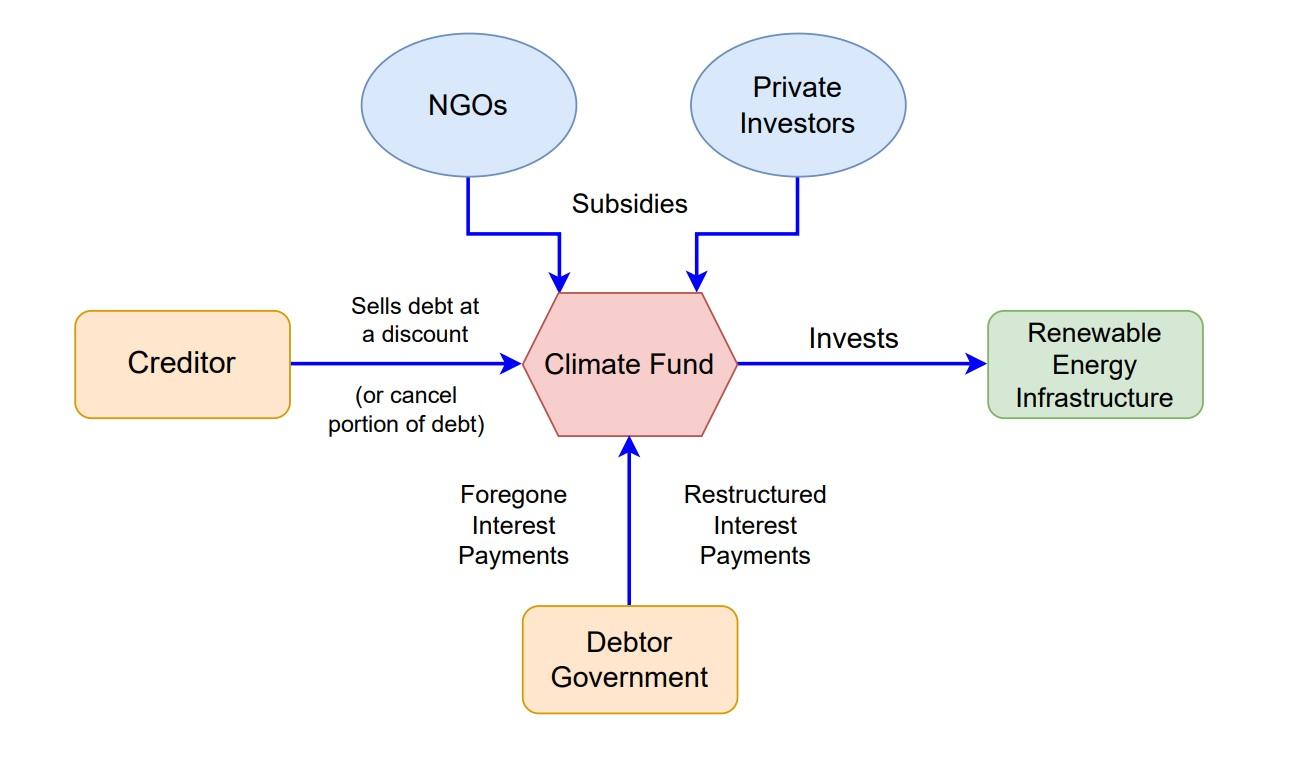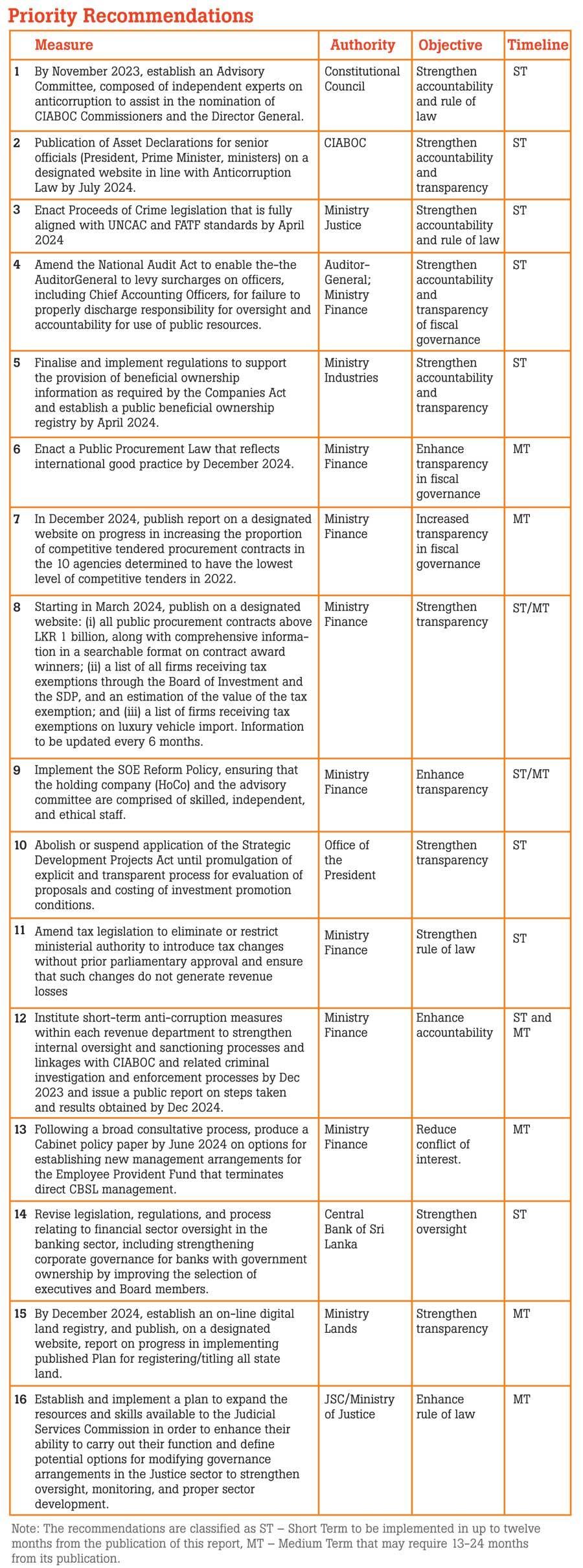සත්ය ධර්මය 1 – වසර 2100 ට පසු සත්ය ධර්මය විවර විය.
October 3rd, 2023තිස්ස ගුණතිලක
පසුගිය 2023 ඹක්තෝම්බර් මස 01වනදා lankaweb.com අඩවියේ පලවූ
‘බොජ්ජංග තුලින් අත්දකින නිවන හා බොජ්ජංගයෙන් ආදේශවන (replace) වන සමත භාවනාව’ යන ලිපිය තුලින් මෙතෙක් වැසී තිබූ නිවන් මාර්ගය සම්පූර්ණයෙන්ම විවර විය.
බුදුන්වහන්සේ අපගේ එකම ශාස්තෘන් වහන්සේය. බුද්ධ වචනය හා බුදුන්වහන්සේ දේශනාකල ධර්මය අප වටහාගත යුතු හා පිලිපැදිය යුතු එකම ප්රතිපදාවයි.
නිවනට ඇති එකම මාර්ග ලෙස බුදුන්වහන්සේ අපට කියාදෙන්නේ සතර සතිපට්ඨානයයි (ඒකායන මග්ගෝ).
බුදුන්වහන්සේගේ ප්රතිඥාව
සතර සතිපට්ඨානයේ ධම්මානුපස්සනාව තුල එන ‘සච්ච පබ්බය’ තුල බුදුන්වහන්සේ අපට ප්රතිඥාවක් දෙයි. එනම් යමෙක් සතර සතිපට්ඨානය නිවැරදිව වඩයිනම් (follow correct) හෙතෙම දින 7ක හෝ අවුරැදු 7 ක කාල පරාසයක් තුල නිවන් දකී හෝ අනාගාමි තත්වයට හෝ පත්වේය යන ප්රතිඥාවයි. මෙය බුද්ධ වචනයයි.
සතිපට්ඨානය උපරිම වශයෙන් සත් අවුරුද්දක් හෝ වඩන්නා නිවන හෝ අනාගාමි තත්වය හෝ ලැබීමට ජිවිතකාලයක් බලා සිටිය යුතු නැත. හෙතෙමේ මෙම කාල සීමාව තුලම එම තත්වයන් ලබාගනී.
note: නිවනට පත්වීමට හෝ අනාගාමි වීමට ජීවිතකාලයක් බලා සිටිය යුතුබව (‘මේ ආත්මයේදීම‘ යයි) ත්රිපිටක සිංහල පරිවරිතනයෙහි සඳහන් වෙයි. සද්ධර්මය ‘අනාත්ම’ ධර්මයක් බවත් නිවන හෝ අනාගාමි තත්වයන් (states) ලැබීමට ආත්මයක කාලයක් බලාසිටිය යුතු නම් බුදුන්වහන්සේගේ ප්රතිඥාව පල රහිත වන බවත් ත්රිපිටකය සිංහලට පරිවර්තනය කල අයට අමතක වීදෝයි නොදනිමි.
ඒ නිසා ඔබ සත්වසරක් ගතවීත් නිවන හෝ අනාගාමි තත්වය හෝ ලබා නොමැති නම් ඔබ විසින් කල යුත්තක් ඇත. එනම්:
- ඔබ විසින් මෙතෙක් අනුගමනය කර ඇත්තේ වැරදි ප්රතිපදාවක් බව තේරුම් ගත යුතුය.
- ඔබ විසින් නිවැරදි ප්රතිපදාව සොයා ගත යුතුය.
මෙතෙක් මාර්ගය යයි සිතා ඔබ අනුගමනය කලේ සමත භාවනාව නම් එයින් නිවන ඈත්වීමක් මිස ලඟාවීමක් සිදු නොවන බව පසක්කිරීමට කාලයයි. තාවකාලික ක්රියාවක් වන සමතය තුල ආත්ම දෘෂ්ඨිය හෝ ආත්ම සංඥාව හෝ දිය (ක්ෂය) නොවේ.
නිවන් දකින ප්රතිපදාව
නිවන් දකින නිවැරදි හා නියත ප්රතිපදාව බුදුන්වහන්සේ ධම්මානුපස්සනාවේ බොජ්ජංග පබ්බය තුල පෙන්වාදෙයි. ඔබට හමුවන හා ඔබ පරිහරනය කරන සියල්ල භාහිරයයි. භාහිරය රූප හැඩතලවලට (වර්ණ රූප, ශබ්ද රූප, ආදිය) හා ඒවායින් නිකුත්වන අංශු තරංග (වර්ණ තරංග, ශබ්ද තරංග අදිය) වලට පමනක් සීමා වෙයි. එහි ආශ්වාදයක් හෝ ඇලීමක් හෝ තන්හාවක් ඇතිවීමට දෙයක් නැත. මෙය යථාර්තයයි.
නමුත් අවිද්යාව හා විඤ්ඤාණ මායාව අපට වෙනත්ම ලෝකයක් (භාහිරයක්) මවා පෙන්වන අතර අප එහි සිරවී සිටින්නෙමු.
භාහිරයට ඇලීමක් හෝ ගැටීමක් (රාග ද්වේෂ) නැති, භාහිරය නිසා සිතේ ගින්නක් ඇති නොවන, ‘කම්පා විරහිත’, පූර්ණ සුඤ්ඤත ස්වභාවයට පත්වීම හා එමගින් ඔබ තුල නිරතුරුවම පවතින (inherently) ‘බුද්ධ ස්වභාවය’ (වය) දැක නිවන් දැකීමට ඔබ විසින් ගත යුතු ක්රියාමාර්ගයත්, අවශ්ය තත්ව සම්පූර්ණවන විට (when conditions are right) නිවන ආයාසයකින් තොරවම (auto) ඔබවෙත ලඟාවන ආකාරයත් බුදුන්වහන්සේ බොජ්ජංග පබ්බය තුල මනාව පෙන්වා දෙයි.
note: ආනන්ද ස්ථිවිරයන් වහන්සේ නිවන් දැක්කේ ප්රථම ධම්ම සංගායනාවට පෙර රාත්රියේ නින්දට යන අවස්තාවේදීය. උන්වහන්සේ භෞතික අතහැරීම සපුරා ශාසන ගතවුවෙකි. බුදුන් ඇසුරේ අවුරුදු ගනනාවක් සුඤ්ඤතා අවබෝධය තුල චෛතසික අතහැරීම පුරුදු පුහුනුකල අයෙකි. සුඤ්ඤතා අවබෝධයෙන් අතහැරීම පරිපූර්ණ කර (total mental & physical detachment) පුර්ණ ප්රීතියට පත්ව ලැබූ සංසුන්තාවය (calmness) හරහා තමා තුල නිරතුරුවම පවතින බුද්ධ ස්වභාවය මතුකරගත් ආනන්ද ස්ථිවිරයන් වෙත එදින රාත්රියේ නිදි යහනට යද්දී ආයාසයකින් තොරවම නිවන ලඟාවිය. අවශ්ය තත්වයන් සම්පූර්ණ කල ඔබටද ආයාසයකින් තොරවම නිවන් දැකිය හැකියි.
භාහිරයේ යථාර්තය එනම් අනාත්මීය ස්වභාවය (ඒවායේ දෙයක් යමක් කෙනෙක් නැති බව) අවබෝධ කොට භාහිරයෙන් මිදුන තැන ඇතිවන සැහැල්ලුව (කම්පා විරහිත ස්වභාවය – අකම්පිත ස්වභාවය – calmness – පස්සද්දි බොජ්ජංගය) නිවනට දොරටුවයි.
සප්ත බොජ්ජංග
නිවන කරා යන මාර්ගයෙහි පලමුවෙන්ම කලයුතු වන්නේ ‘සිහිය’ පිහිටුවාගැනීමයි – යෝනිසෝමනසිකාරය ඇතිකරගැනීමයි (සති බොජ්ජංගය). එනම් යමක් සිහියට හසුවන තත්වය හඳුනාගැනීමයි. සතර සතිපට්ඨානයේ කායානුපස්සනාව හා වේදානුපස්සනාව තුලින් කියාදෙන්නේ එම පිලිවෙතයි.
සිතේ ආතතියක් ඇතිකරවන ‘කම්පාවට’ මූලික සාධකය වන්නේ භාහිරය කෙරෙහි ඇතිකරගන්නා ඇලීම හෝ ගැටීම නිසා ඇතිවන ගින්නයි. ගින්නට මුල භාහිරයේ පවතින්නක යථාර්තය (reality) නොදැක ඒවා ආත්මීය (දෙයක් යමක් කෙනෙක් ඇති) ලෙස විඤ්ඤාණ මායාව තුලින් අල්ලා ගැනීමයි. මෙම විඤ්ඤාණ මායාව හොඳින් දැනගැනීම හෙවත් පටිච්චසමුප්පාද ධර්මය නිවැරදිව දැනගැනීම (keen knowledge of Dhamma) ධම්මවිචය බොජ්ජංගයයි.
මේ ජීවිතයේ සියල්ලම අතහැරීමෙන් හැර වෙනත් කිසිම දෙයකින් ‘පූර්ණ ප්රීතිය’ (total happiness – ප්රීති බොජ්ජංගය) ලැබිය නොහැකියි. පූර්ණ ප්රීතිය ලද සැනින් ආතතිය දුරුවී සිත සංසුන්වෙයි (calmness – පස්සද්දි බොජ්ජංගය). ආතතිය දුරුවී සංසුන්වූ සිත, සිතේ නිරතුරුවම පවත්නා බුද්ධ ස්වභාවය නැතහොත් වය ප්රසාද ධාරාව සමඟ ඒකාග්රවෙයි (සමාධි බොජ්ජංගය). එම තත්වය දිගටම සක්රීයව (keep active) පවත්වාගැනීම උපේක්ෂා බොජ්ජංගය හරහා සිදුවෙයි. එහිදී අවදිවූ බුද්ධ ස්වභාවය අධිගත සමාධිය (නිවන) තෙක් (දක්වා) වර්ධනය වෙයි.
සද්ධර්මය තුල සුඤ්ඤතාවය එනම් භාහිරයේ දෙයක් යමක් කෙනෙක් නැති ස්වභාවය අවබෝධ කලයුත්තේ ඒවායේ හරයක් වටිනාකමක් නැති බව දැක ‘අතහැරීම’ පිනිසමය. වටිනාකමක් නැති භාහිරය අතහරිනවා මිස බදාගැනීමක් කුමකටද?
විඤ්ඤාණ මායාවට හසුවී ආත්මීයවන භාහිරය අතහැරිය හැක්කේ භාහිරයේ දෙයක් යමක් කෙනෙක් නැතිබව ‘විදර්ශනාවෙන්’ (විපස්සනාවෙන්) දැකීමෙනි. එතන එතන ඇතිවන අරමුණේ සත්යය එනම් දෙයක් යමක් කෙනෙක් නැතිබව දැකීම (අවබෝධය) විපස්සනාවයි.
යථාර්තයක්වූ දෙයක් යමක් කෙනෙක් නැති ඒ නිසාම වටිනාකමක් නැති භාහිරය චෛතසිකවත් භෞතිකවත් (mental & physical) අතහැරීම පහසුය. යථාර්තය ගැන තරමක හෝ අවබෝධයක් සහිතව සසුන්ගතවන භික්ෂූන්වහන්සේලා භෞතික අතහැරීම සසුන්ගතවන මොහොතේම සාක්ෂාත් කරගනී (acheived).
භාහිරයේ සුඤ්ඤත ස්වභාවය එනම් දෙයක් යමක් කෙනෙක් නැති ස්වභාවය නොහොත් යථාර්තය විදර්ශනාවෙන් සිහියට හසුකර ගැනීම චෛතසික අතහැරීමයි. චෛතසික අතහැරීම සම්පූර්ණ කල තැනැත්තා සක්කාය දිට්ඨිය ප්රහානය කොට සෝවාන් තත්වය (state) අත්විදියි. මෙහිදී භාහිරය දකින/විදින අරමුණ උපාදානවීම (බැසගැනීම) ක්රමයෙන් දියවී ගොස් භවය සකස්වීම (භාහිරය දෙයක් යමක් කෙනෙක් වන ස්වභාවය) දියවී යයි (උපාදාන පච්චයා භව). භවය සකස් වන ස්වභාවය දියවනවිට භාහිරය දකින විඳින ‘මම’ ද ක්රමයෙන් දියවී යයි (භව පච්චයා ජාති). ‘ක්ෂය ධම්මා වය ධම්මා’ ලෙස දහම තුල දැක්වෙන්නේ මෙම සංසිද්ධියයි.
විපස්සනාවෙන් භාහිරයේ පවතින සුඤ්ඤතාවය අවබෝධය තුල චෛතසික අතහැරීම සිදුවන අතර (state of සෝවාන්), දෙවන අදියර වන භෞතික අතහැරීම සම්පූර්ණවීමෙන් නිත්ය ආතතියෙන් මිදුන ස්වභාවය තුල ඇතිවන පස්සද්දිය (calmness) හරහා තමා තුල නිරතුරුවම පවකින ‘බුද්ධ ස්වභාවය’ නොහොත් ප්රභාශ්වරය අත්විඳිය හැකියි. එවිට ‘ඔබ‘ යථාර්තය එනම් අනාත්මීය භාහිරය (ස්වභාවධර්මය – nature) සමග බද්ධවී නිවන් දකී. නිවනේදී අත්දකින්නේ අනිමිත්ත, අනිදස්සන සමාධියකි. එනම් (සංකාර, විඤ්ඤාණ නැති) ප්රභාශ්වරයයි. එවිට භාහිරය දකින්නේ විඳින්නේ (දිට්ඨ සුත මුත විඤ්ඤාත වන්නේ) ස්කන්ධ මට්ටමේ සංවේදක (sensors) වලින් මිස ආයතන මට්ටමේ (නාමරෑප පච්චයා සලායතන) ඇතිවන සලායතන වලින් නොවේ. මෙය විඤ්ඤාණ මායාවට අසුවී උපන්දා සිට මේ මොහොත දක්වා දීර්ඝ කාලයක් උදය (සමුදය) සංඥා ධාරාවේ සිරගතවී භාහිරය සලායතන මට්ටමේ දට්ඨ සුත මුත විඤ්ඤාත ලෙස වින්ඳාට වඩා වෙනස් ස්වභාවයකි.
මෙසේ අත්දකින නිවන ‘සිහියට’ හසුවෙයි. මෙහිදි ඇත්තවශයෙන්ම සක්රිය (activate) වන්නේ ‘සිහිය’ නොව සිහියේම උසස් අවස්තාවක් වන ‘ඤාණ’ හරහා උපදින ‘ප්රඥාවයි’. ඤාණ හා එහි කෙලවර ඇතිවන උසස්ම ඤාණය වන ප්රඥාව යනු කෙලෙස් (රාග ද්වේශ මෝහ) ක්රමයෙන් දියවනවිට සිහියේ ඇතිවන හිඩස පිරවීමට ‘මතකය’ අසලම විද්යාමාන වන්නකි. මේ නිසා බුද්ධ ස්වභාවය, වය – වය ප්රසාද ධාරාව, නිවන යන තත්වයන් ඇතිවූ විගසම ප්රඥාවට හසුවෙයි.
නිවන නිර්වචනය කල නොහැකි වුවත් එය දැනෙන්නේ වෙනත් මානයකට (different dimension) ඇතුළුවූවාක් මෙනි. ‘ඔබ‘ අනාත්මීය භාහිරය (ස්වභාවධර්මය – nature) හා බද්ධවන අවස්ථාවේ සංවේදක (sensor) මට්ටමෙන් භාහිරය අත්විඳියි (දිට්ඨ සුත මුත විඤ්ඤාතය ස්කන්ධ මට්ටමේ සිදුවෙයි).
ඉහත සඳහන් ක්රියාවලිය තිපරිවට්ටයේ පලමුවැන්න වන සත්ය ඤාණය තුල දැනුමෙන් වටහාගත යුතුය. ඉන්පසුවයි ප්රතිපදාව තුල එය අවබෝධයක් බවට (කෘත්ය ඤාණය – තිපරිවට්ටයේ දෙවන අදියර) පරිවර්තනය කරගත හැකිවන්නේ.
ඉදිරි ලිපියකින් සත්ය ඤාණය වටහා ගැනීමට උත්සාහ කරමු.
තෙරුවන් සරණයි.
තිස්ස ගුණතිලක
2023 ඔක්තොබර් 04 වනදා



